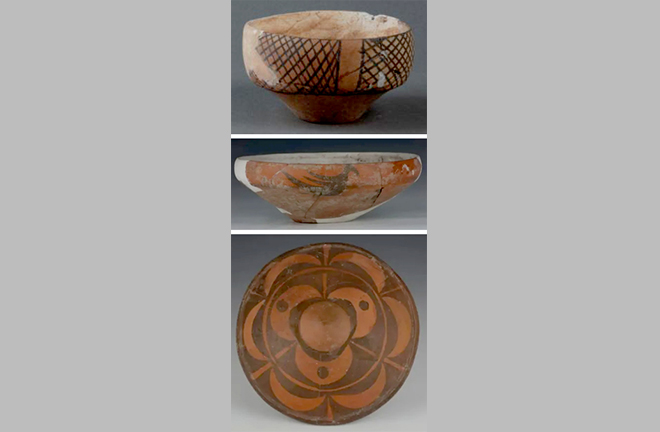Miaodigou painted pottery

FILE PHOTOS: The Miaodigou pottery vessels adorned with grid patterns (above), bird-shaped motifs (middle), and petal patterns (below)
The Miaodigou culture of the middle Yangshao period predominated the border areas of present-day Shaanxi, Shanxi, and Henan provinces. Its powerful influence introduced painted pottery art forms to other surrounding cultures. The Miaodigou culture was viewed as the heyday of painted pottery, with its painted pottery more richly decorated in terms of motifs, patterns, and compositions than those of the Banpo phase. Realistic patterns were largely replaced by abstract patterns such as petal motifs.
There are some typical motifs of Miaodigou painted pottery. The first one features grid patterns in black pigment. These net-like designs likely represent the use of fishing nets in ancient times, indicating that people of that era might have used such nets for catching fish.
The Neolithic people lacked knowledge of seasonal agricultural practices, but found inspiration in the movements of the sun, the changing seasons, and the migratory patterns of birds. The migration of birds could indicate seasonal changes, and thus became an important signal for agricultural development to the ancient people. Miaodigou pottery commonly featured simplified bird-shaped designs, with pottery-makers skillfully capturing the distinctive flying postures of birds by depicting outstretched wings using dots and lines.
The most distinctive pattern of Miaodigou pottery is petal-shaped patterns, usually composed of two layers of petals, with the overall design resembling a blossoming flower.
Edited by REN GUANHONG
